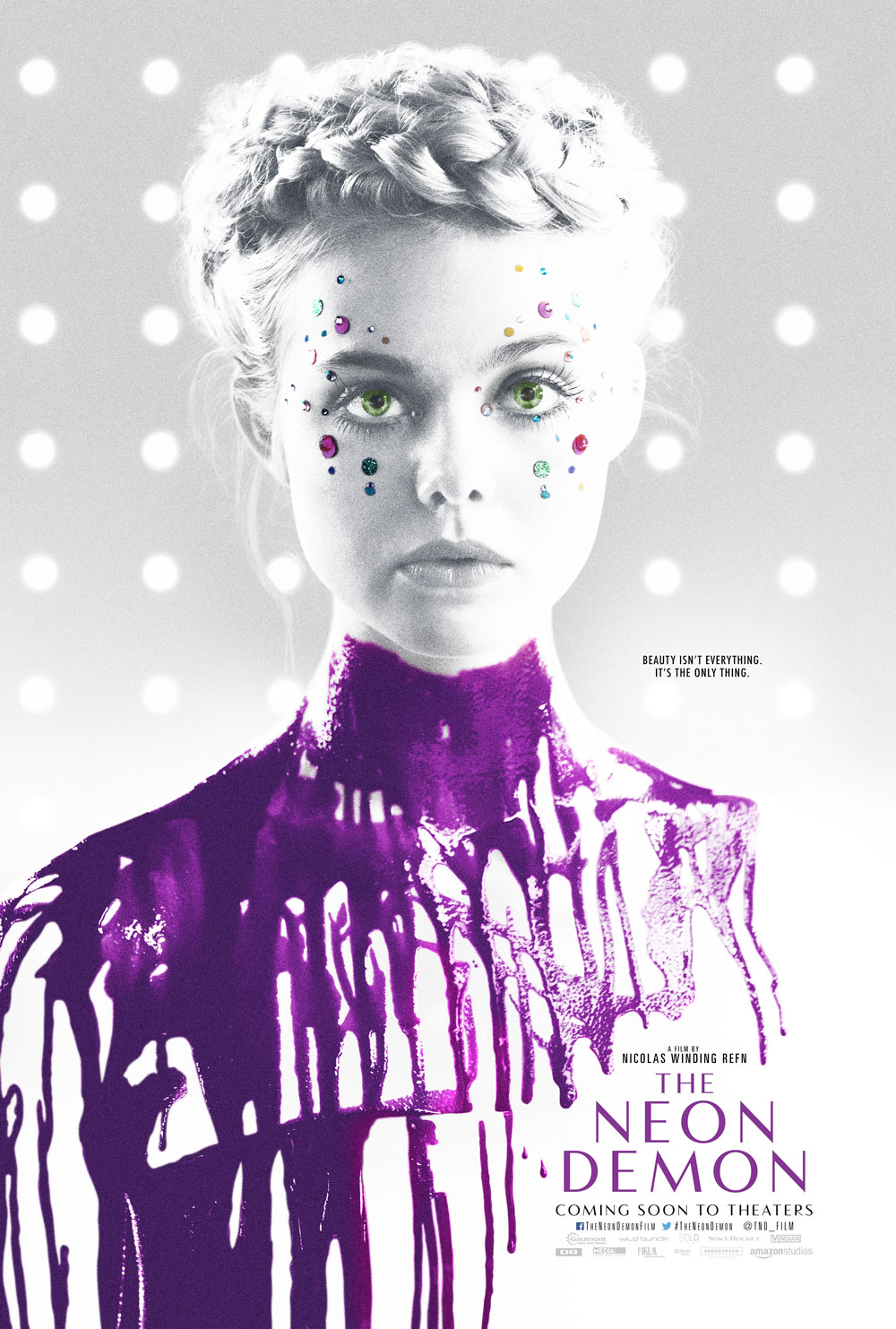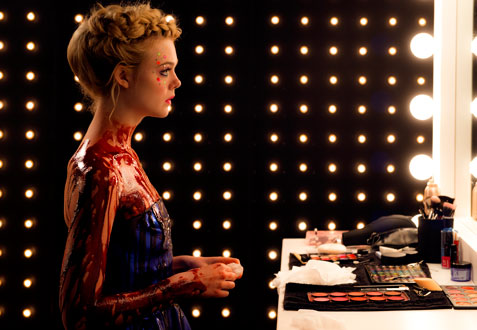Movie Review: “The Neon Demon”

Following up on the polarizing “Only God Forgives,” director Nicolas Winding Refn has made a movie that’s bound to split audiences just as much as the unconventional revenge thriller starring Ryan Gosling. “The Neon Demon” is a beautiful, hypnotic nightmare that goes to some comical, horrifying and unexpected places – places not all audiences are understandably willing to go.
Jesse (Elle Fanning) has just moved to Los Angeles, but not to be a star like most people. Though the teenage girl’s past is a bit of a mystery, it’s obvious she’s always had to survive on her own. Even when Jesse starts to find some success in the modeling world, she’s still fighting to survive. Being the new girl on the scene and finding success so quickly, she makes enemies with fellow models Gigi (Bella Heathcote) and Sarah (Abbey Lee), who are less taken with young Jessie than their friend, makeup artist Ruby (Jena Malone). For the most part, Jesse is on her own in these cruel environments – whether in an off-putting nightclub, a photo shoot or a crappy motel – and surrounded by even crueler characters that want to devour her beauty.
Upon first viewing, Jesse’s journey doesn’t add up to much. The film, which Refn co-wrote with Marry Laws and Polly Stenham, relies more on atmosphere than plot, but the story isn’t as thin as it initially appears. There is a purpose to every scene and shot in “The Neon Demon,” and they’re always serving Jesse’s story. When a mountain lion trashes the teenager’s room, it seems random at first glance, but it’s a key piece of foreshadowing of what’s to come. Even a sequence that features two of the main characters showering together, which easily could’ve been laughable or gratuitous, reinforces the story Refn is telling – a story about animals.
“The Neon Demon” is just as fun to unpack as it is to watch. Characters often speak in themes (women use lipsticks named after food or sexual acts, one character notes), so it’s quite clear what the film is really about, but Refn’s images still tell this story more than the dialogue does. In the second act, there’s a scene where Jesse makes a pivotal choice that informs the rest of the film and her arc, and it’s communicated completely through visuals. She kisses her reflection in a dreamlike sequence, embracing her narcissism. Then, after Refn cuts to black, she’s reborn, entering a restaurant as if she’s exiting a womb, completely transformed, just as narcissistic and as unpleasant as Gigi and Sarah. Gone is Jesse’s seemingly wide-eyed innocence, replaced by the girl her mother once called “dangerous”; she’s accepted her true self. It’s a visually dazzling sequence – one that opens itself up to all sorts of interpretations and drives the story forward.
“The Neon Demon” is a movie that grows richer on second viewing. The nuances – such as Refn and cinematographer Natasha Braier’s contrasting shots of beauty (characters or landscapes) and empty environments (hallways or studios), which reflect the film’s themes and characters – become more apparent, more admirable and more enjoyable. But looking past the visual storytelling, the real part of “The Neon Demon’s” charm is that it’s unpredictable, a nasty treat to watch unfold. Refn consistently finds ways to subvert expectations and deliver the unexpected, keeping audiences on their toes until the surprising but inevitable bloody finale, which features one wonderful reaction shot that reminds us Refn isn’t without a sense of humor.
Related Posts
Comments Off on Movie Review: “The Neon Demon”
Posted in: Entertainment, Movie Reviews, Movies
















